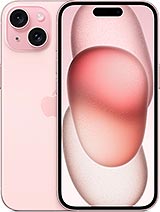Google Pixel 9 review
Regular Actua 6.3-inch OLED display
The Pixel 9 features a 6.3-inch OLED display that's a notch below the 9 Pro's level, even if the diagonal is supposedly the same. With a FullHD resolution and a 120Hz maximum refresh rate, as well as 2,700nits of peak brightness (advertised), it's still not too shabby on the specs, despite not being quite Pro-grade.
The Pixel 9's panel is dubbed just Actua, as opposed to being Super Actua like the Pros' displays. That means it's not an LTPO panel and can only switch between 120Hz and 60Hz, while the Super Actuas support finer levels of adjustment. The resolution here is sort of a proper FullHD+, if you can call it that - 1,080x2,412px vs. the 9 Pro's 1,280x2,856px, and pixel density is a bit lower at 422ppi vs. 495ppi (still perfectly good enough, we reckon). Just like on the Pros, the panel here is 8-bit, for up to 16 million colors - no 10-bit or 12-bit color on this one either.
In our testing, the Pixel 9 non-Pro was good for over 1,200nits of maximum brightness when adjusting it manually, the Adaptive toggle adding another thousand nits when the phone is under bright light. Both numbers are spectacular and easily better than what any competitor can muster at this time.
Refresh rate
As already mentioned, the Pixel 9 doesn't do fine refresh rate adjustments - it's only capable of 120Hz and 60Hz. There's a 'Smooth display' toggle in the display settings menu which enables the 120Hz maximum - it was off by default, at least on our review unit's software build, so do check and flip it on if you're not getting the expected display smoothness out of the box.
With Smooth display enabled, the Pixel 9 will cooperate to get you high frame rate gaming - it goes into 120Hz mode for the arcade and 3D titles we normally test for. It's also happy to maintain 120Hz in browsers and social apps that are displaying moving content, and will naturally also stay at 120Hz when you're interacting with the phone, only dropping to 60Hz for static content when idling. With Smooth display turned off, it's a constant 60Hz refresh rate.
Streaming and HDR
The Pixel 9 supports HDR10 and HDR10+, but you won't be getting Dolby Digital compliance. YouTube and Netflix do send HDR streams to the Pixel, and thanks to the Widevine L1 certification you'll be getting high-resolution DRM-protected content (FullHD in Netflix).
The Google Ultra HDR standard for displaying boosted brightness in metadata-enhanced photos is also supported, naturally - both for the Pixel's own images in Google Photos, as well as other compatible phones' photos online in browsers or socials.
Google Pixel 9 battery life
The Pixel 9 is equipped with a 4,700mAh battery, a sizable powerpack for a handset that is non-Pro - and a relatively small non-Pro at that. It's the same capacity that the Pixel 9 Pro gets, and a modest upgrade over the Pixel 8 (4,575mAh) and 8a (4,492mAh). The Galaxy S24, meanwhile, stands at 4,000mAh, while the iPhone 15's battery is only rated for 3,349mAh.
In our testing, the Pixel 9 proved a worthy upgrade over the Pixel 8 in the endurance department, getting meaningfully better results in all four tests and nearly two hours more in the overall Active Use Score. In doing that, it's become one of the better options when it comes to battery life, outlasting the Galaxy S24 in three of the four tests, and comparing favorably to the iPhone 15.
Our new Active Use Score is an estimate of how long the battery will last if you use the device with a mix of all four test activities. You can adjust the calculation based on your usage pattern using the sliders below. You can read about our current battery life testing procedure here. For a comprehensive list of all tested devices so far, head this way.
Charging speed
The Pixel 9 supports charging at up to 27W when using the new Google 45W adapter, though it should technically be able to reach that with other good USB Power Delivery chargers that have the right volts and amperes combos in their specs. We didn't have this new adapter at our disposal, so we tested with the 30W unit, as well as Samsung's 45W adapter that's specced surprisingly closely to the Google 45W one.
Google promises the Pixel 9 should be able to get from 1% to 55% in 30 minutes with the new 45W adapter, and that's pretty much what we got with the Samsung charger. Both the iPhone 15 and the Galaxy S24 are about as quick over the first half hour, and the Galaxy is slightly quicker to full than the Pixel, while the iPhone takes its time in the later charging stages. We also did a test with the Google 30W charger and it was only marginally slower (52% in 30 minutes, 1:28h to full), so if you have that one already, there's no need to get the new one - you won't be gaining much.
The Pixel 9 supports wireless charging up to 12W when using charging pads that adhere to the Qi Extended Power Profile. When using Google's own Pixel Stand (2nd gen), that number goes up to 15W. Battery Share is also on the menu - you can charge other Qi-certified devices off of the Pixel 9's back.
Speaker test
The Pixel 9's speaker setup is the usual Google hybrid stereo implementation. There's a bottom speaker that outputs through an opening in the frame, and a front-firing top speaker which is also the earpiece for voice calls. In portrait, the top unit gets the left channel, while in landscape each spear will get the correct track, depending on the phone's orientation. Each speaker will also output the opposite channel's track, at a lower volume.
The Pixel 9 earned a 'Very Good' rating for loudness in our testing, same as the Pixel 8 and the Galaxy S24, while the iPhone's result placed it in the 'Good' category. The thing is, though, the iPhone 15 sounds the best of this bunch, to our ears. The Pixel 9 is notably thin in the low end, though it does just fine with vocals and higher frequencies.
Use the Playback controls to listen to the phone sample recordings (best use headphones). We measure the average loudness of the speakers in LUFS. A lower absolute value means a louder sound. A look at the frequency response chart will tell you how far off the ideal "0db" flat line is the reproduction of the bass, treble, and mid frequencies. You can add more phones to compare how they differ. The scores and ratings are not comparable with our older loudspeaker test. Learn more about how we test here.
Reader comments
- Anonymous
- 02 Apr 2025
- 0nm
There's a recurring and unpredictable bug, where your alarm won't ring in the morning. Does it really matter how good the rest of the features are when the basics are not covered.
- David
- 18 Mar 2025
- 4dH
You know that if you want a file manager, there are countless options, some way better than both offers, right on Play Store right? I mean, since when a built in file manager is an advantage of one phone over the other?





